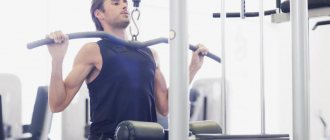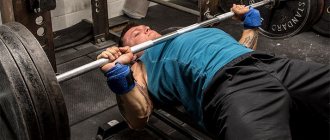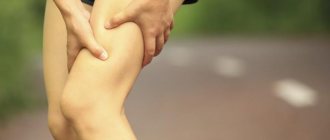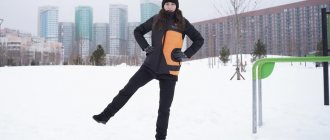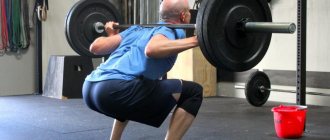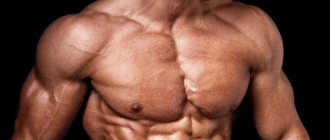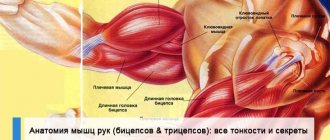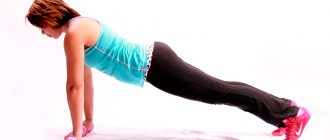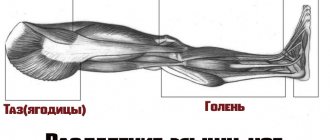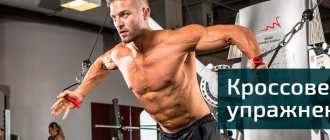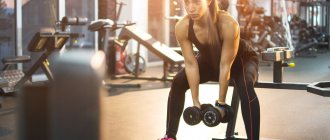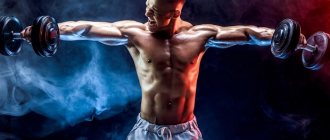Concept of exercise in sports
To summarize, physical exercises are various types of movements performed during any physical activity. Each sport has its own specific set of exercises.
There are a lot of classifications for them:
- by energy supply mechanism (aerobic and anaerobic)
- according to what motor qualities are developed (for example, strength or endurance)
- by type of competitive activity (competitive, auxiliary and general developmental)
- by type of muscle contraction (dynamic and static) and others
All these categories help to select those movements that will help achieve the goal set for the athlete.
How to properly train at home?
Before you start training, stock up on the desire to work on yourself and the desire for a healthy, fit body. A few simple but important details will help you make the lesson comfortable and interesting.
Set a workout schedule
It’s not for nothing that they say that discipline is the key to success. Choose the time and days of classes that are convenient for you so that you can perform the exercises systematically and without excuses.
Make a music playlist
If your attention is easily distracted, it is better not to combine studying at home with watching a TV series or movie. To concentrate on sports, make an upbeat and energetic playlist. It will motivate and lift your spirits.
Photo: istockphoto.com
Choose a convenient place to train
Before you begin, prepare a comfortable and safe space. Remove unnecessary things from there and move furniture if necessary. Lay out a mat to prevent slipping while doing exercises.
Don't forget about sportswear
Don’t think that sports outfits are only needed for working out in the gym. After all, one of the main advantages of special fitness clothing is that it does not restrict movement and allows you to train at full range. Therefore, we do not recommend exercising in old shorts and slippers, as this can lead to injury.
Drink water
During training, it is necessary to restore water balance. So you need to drink at regular intervals, regardless of whether you are very thirsty or not.
Make it louder! 10 best tracks for training
A very masculine workout. How to build strong and massive arms
Exercises in the gym
The classifications listed above are used in bodybuilding to varying degrees.
But, as a rule, all exercises for all muscle groups are often divided into three large groups:
- Power
- Cardio
- For flexibility
Let's look at each category in more detail.
Power
This is the largest list of exercises performed in the gym. The main goal of strength training is to stimulate muscle growth and strength or maintain tone.
In turn, they are divided into a couple more types, which we will talk about in more detail below.
Cardio
In bodybuilding, it is not enough to build large muscle volumes. In order for your figure to look athletic and your muscles to be clearly visible, you need to monitor your body fat level. This problem is solved by following a diet with the right amount of calories.
Regular cardio training in bodybuilding is practiced primarily to accelerate fat burning.
They are also used to train the cardiorespiratory system and general endurance.
To do this, use a number of exercises that are commonly called aerobic:
- walking or running
- riding an exercise bike
- swimming
- orbitrek
- stepper
- rowing
Depending on the equipment of the room, there are other cardio exercise machines. For example, a climber (imitation of steps), a horizontal exercise bike and others. But they are all intended for the same purpose, and have almost no effect on muscle growth.
Stretching
Regular strength training of muscles has one negative effect - over time, muscles lose elasticity, and joints and ligaments lose flexibility.
To prevent this phenomenon, exercise in the gym should include regular stretching or, in other words, stretching.
Thanks to this comprehensive approach to exercise in the gym, exercises are performed for the entire body, achieving several effects.
Three best exercises to work all muscle groups
There are a number of exercises that can be performed at home without having any equipment at hand - it is important to have fresh air, clean still water and a mat or its alternative. It is enough to train every other day - 30-40 minutes.
You can maintain physical activity with the help of basic multi-joint exercises that are natural from the point of view of biomechanical movements. Please note that you should warm up and stretch before and after training. Ten minutes is enough to warm up; the main task is to warm up and prepare the body for the load. At home, in the absence of exercise equipment, simple movements, for example, marching in place, are suitable as a warm-up. Plus you need to stretch well, using all muscle groups.
Basic complex
1) Squats
A basic multi-joint exercise, very energy-intensive and energy-consuming, aimed at developing all leg muscles. When performing it, the back and abdominal muscles are also involved.
Quantity: 5 sets of 20 reps with wide feet (Sumo).
Technique: feet wider than shoulders, with the toes naturally turned to the sides, the movement begins by shifting the hip joint back and flexing the hip until the femur mechanically stops in the hip joint. In this case, the knees are directed towards the socks. It is important to maintain the natural curves of the spine. The hands are placed on the belt, with the shoulder blades adducted and lowered down. It is important to avoid rounding the back in the lumbar region. If this happens, it is necessary to reduce the amplitude of the squat.
Rest: 1 to 2 minutes between sets.
2) Push-ups
An excellent multi-joint exercise aimed at developing chest muscles. Also, during its execution, several agonist muscles are activated, deltoids, triceps, and rectus abdominis.
Quantity: 5 sets of 10-15 repetitions.
Technique: emphasis on hands and toes. The angle of the humerus in relation to the body is no more than 60°-65°, we maintain the natural curves of the spine, and perform push-ups at full amplitude, stopping approximately 5-10 cm from the floor. If it is difficult to do push-ups in this version, there are options: push-ups with support on the knees, while the shin is bent or remains on the floor.
Rest: 1 to 1.5 minutes between sets.
3) Plank
The exercise is a multifunctional isometric exercise that involves a large number of muscle groups: all the abdominal muscles (rectus, oblique, transverse), as well as the back muscles. There are more complex variations of this exercise, such as dynamic planks, balance modifications, but they are best performed in the presence of a World Class trainer.
Quantity: 5 approaches, from 30 seconds to 1 minute.
Technique: support on the forearm, forearms parallel to each other. The elbow joint is strictly under the shoulder joint. Abdominal muscles are toned. It is important to maintain the natural curves of the spine, emphasis on the toes, the leg muscles are also tense in order to relieve the load from the lower back.
Rest: 1 minute between sets.
To improve the effectiveness of your training, you need to pay attention to two basic things: sleep and nutrition.
Our body recovers mainly during sleep. With a lack of sleep, the psyche suffers, stress accumulates, and in this case there can be no talk of training - they will only aggravate the state of the nervous system and psyche as a whole. Therefore, I recommend sleeping at least 8 hours.
You will definitely get the opposite result if you do not normalize your diet. My recommendation: three to four full, balanced meals a day without snacking. Try to avoid fast food, carbonated drinks and juices with a lot of sugar, baked goods, potatoes and highly salted foods, as well as strong alcoholic drinks and all kinds of cocktails.
And, of course, do not forget that the most effective method for working on your body is regularity and consistency!
Types of strength exercises
As mentioned above, the basis of regular bodybuilding exercises is strength exercises. There are also different classifications here.
First of all, they are divided into basic and insulating. They are performed with free weights (barbell, dumbbells, body weight, etc.) or in blocks and exercise machines.
Strength movements are also classified according to their effect on muscle groups, as well as the development of strength qualities.
In basic exercises, two or more joints move at once and several muscle groups are worked. Their prominent representatives are barbell squats and deadlifts.
For example, squats engage the hip and knee joints, as well as the quadriceps, hamstrings, glutes, psoas and abs. In total, about 240 muscles are involved in movement.
The main purpose of using the base is to maximize stimulation of muscle growth and strength. They stimulate the release of the hormone testosterone more than others, which is directly related to an increase in volume.
Isolation exercises are movements that involve only one joint and a small number of muscles.
For example, when doing dumbbell flyes while lying on a bench, only the shoulder joint works, and the pectoral muscles receive the maximum load.
Isolation weakly stimulates muscle growth. However, it is often used in bodybuilding. Especially during relief training, when you need to work on detailing and polishing the muscles.
During this period, most of the exercises performed are isolated.
By type of burden
Depending on the equipment used, exercises are divided into those performed with free weight, like a barbell or dumbbells, or in blocks and machines.
For example, the barbell or dumbbell bench press is a basic movement with free weights. But a similar bench press is performed in a Smith machine, in a Hummer machine, and even in a crossover. They are also multi-joint, although they are made with different equipment.
It is believed that the use of blocks and exercise machines is inferior in terms of the effectiveness of the impact on muscles to similar movements with free weights.
By muscle group
Muscle exercises are also divided according to their effect on a specific muscle group. This is not a very accurate and correct classification, as it is more suitable for isolating movements. But dividing the base on this basis is more difficult. This is explained by the fact that it simultaneously involves several muscle groups.
For example, the most controversial exercise is the deadlift. It is generally stated that this is a basic movement for the back muscles. But in addition to the back, the muscles of the legs and forearms actively work here.
However, the list of exercises with such a confusing definition is relatively small.
In general, exercises for each muscle group are fairly clearly ranked. Well, some “controversial” ones are conventionally considered to be aimed at pumping one large muscle group.
For the development of strength qualities
This is the last type of classification of strength exercises in the gym. It is more often used by those who pay more attention to strength development.
Here, movements are distinguished for the development of maximum strength, strength endurance, explosive and starting strength.
In bodybuilding, such terminology is rarely used, since these exercises are not primarily aimed at increasing muscle volume.
A set of basic exercises
Day 1 (Legs, shoulders)
- Squats 4x8-12;
- Deadlift 4x8-12;
- Lunges 4x8-12;
- Romanian deadlift 4x8-12;
- Military press 4x8-12;
- Barbell row to the chin 4x8-12.
Day 2 (Back, chest, arms)
- Wide grip pull-ups 4x8-12;
- Pull-ups with a narrow reverse grip 4x8-12;
- Bent-over barbell row 4x8-12;
- Bench press 4x8-12;
- Dips 4x8-12;
- Push-ups 4x8-12.
